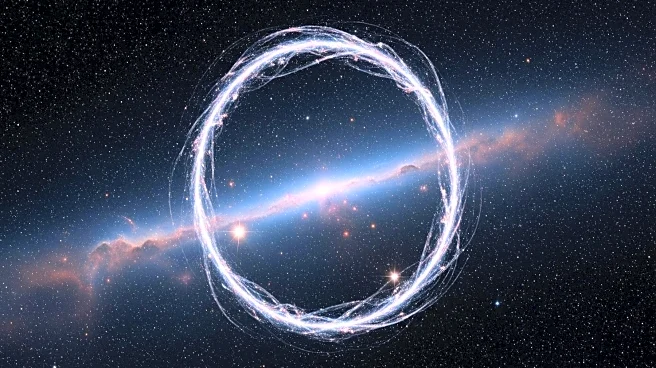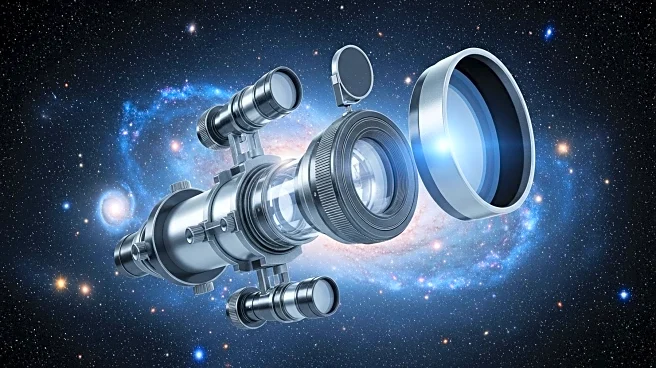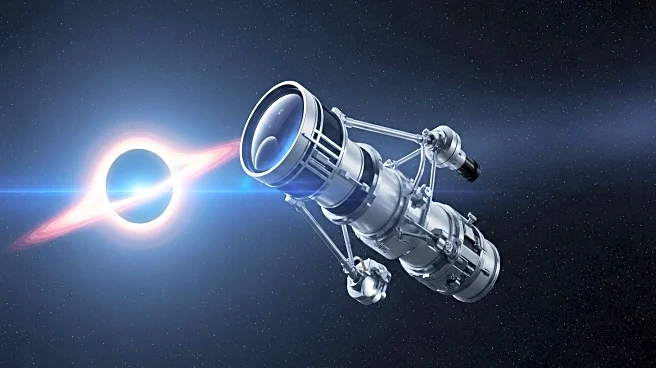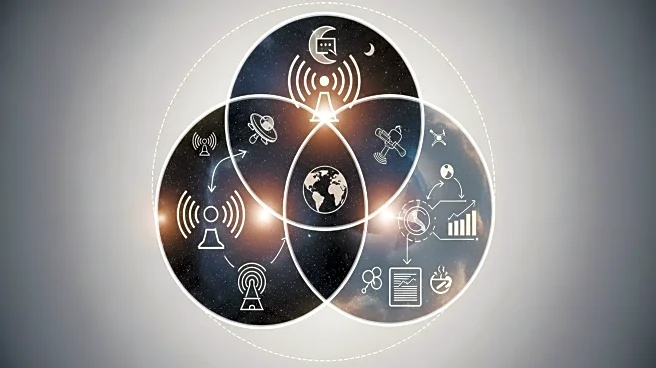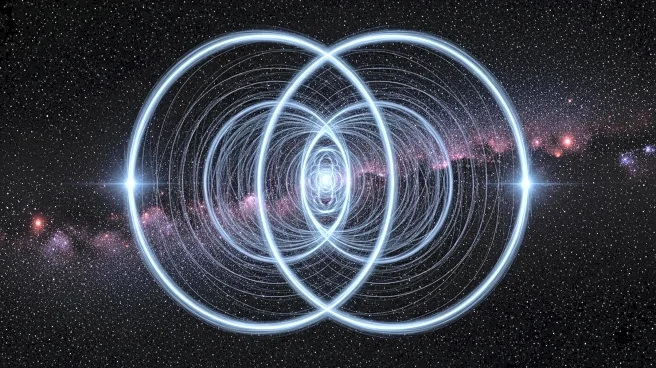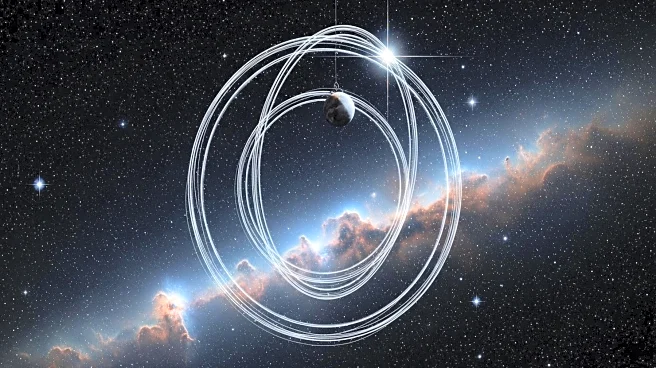What is the story about?
What's Happening?
Citizen scientists have identified a pair of extragalactic radio signals forming a near-perfect Venn diagram, known as 'odd radio circles' (ORCs). These vast rings of magnetized plasma, visible only at radio wavelengths, emit non-thermal synchrotron radiation and span hundreds of thousands of light-years. The discovery, detailed in a paper published in the Monthly Notices of the Royal Astronomical Society, marks the most distant and powerful ORCs documented to date. The research, led by Ananda Hota from the RAD@home Astronomy Collaboratory, suggests these cosmic structures may provide vital clues about the co-evolution of galaxies and black holes. The ORCs were detected using the Low Frequency Array, a sensitive radio telescope in Europe, with professional scientists confirming the findings.
Why It's Important?
The discovery of these odd radio circles is significant as it may enhance understanding of the dynamics between galaxies and black holes. ORCs are considered among the most bizarre cosmic structures, potentially offering insights into the processes that shape galaxies. The findings suggest that ORCs could be shockwaves from merging galaxies or remnants of supernovas, indicating a correlation with large galaxies. This research underscores the importance of citizen science in astronomical discoveries, highlighting human pattern recognition's role alongside machine learning. The study also suggests that ORCs are part of a broader family of plasma structures influenced by black hole jets and galactic environments.
What's Next?
Further research is needed to pinpoint the exact causes of odd radio circles and their relationship with large galaxies. The study raises the possibility that ORCs are formed by 'superwinds' compressing dormant radio lobes, a hypothesis supported by nearby radio signals from gigantic galaxies emitting powerful jets of plasma. Continued observations and analysis may reveal more about the environmental factors shaping these rings. The involvement of citizen scientists in such discoveries may encourage more public participation in scientific research, potentially leading to more breakthroughs in understanding cosmic phenomena.
Beyond the Headlines
The discovery of ORCs highlights the evolving role of citizen science in astronomy, demonstrating how non-professional astronomers can contribute to significant scientific advancements. This collaboration between citizen scientists and professional researchers may inspire new methods of data collection and analysis, fostering a more inclusive approach to scientific exploration. The study also emphasizes the importance of radio astronomy in uncovering hidden cosmic structures, which could lead to advancements in technology and methodology in the field.
AI Generated Content
Do you find this article useful?
